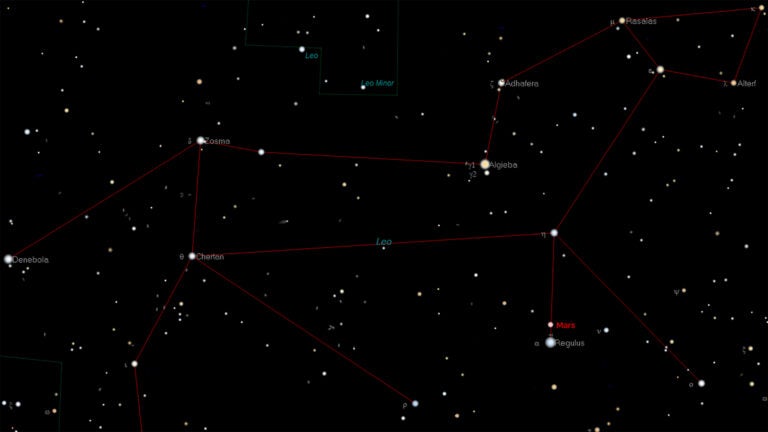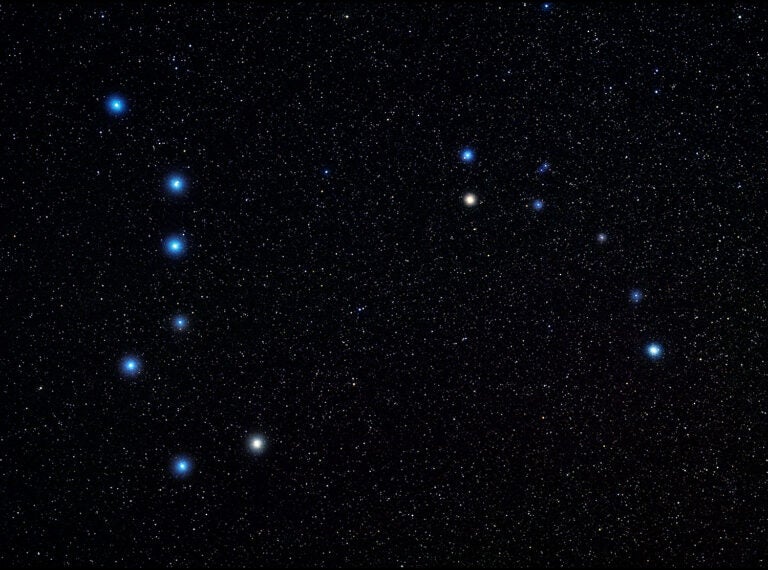The beauty of keeping observing records — whether images, a logbook, or sketches — is that they may be important in the future. A recent investigation of Mars proves this point.
In 1973, the McDonnell Douglas Amateur Astronomers Club of St. Louis, Missouri, organized an amateur observing campaign of Mars, which led to a curious finding. On the morning of Sept. 2, Jim Melka and Rick Melvin of St. Louis used an 8-inch Newtonian reflector to image Mars with a 35mm camera. At 7:50 Universal Time (UT), they recorded a peculiar pair of north-south-oriented clouds, their perimeters touching.
Visually, the clouds resembled a figure eight and appeared as bright as the south polar cap. Their timing was odd — during early winter in Mars’ northern hemisphere, when the planet’s atmosphere is normally too dry to support discrete clouds. And they were unlike any other known cloud features on the Red Planet, such as frosts or fogs.
Melka later determined the clouds were in the planet’s southwestern quadrant in the Solis Lacus, the famous Eye of Mars. The northern cloud was 430 miles (692 kilometers) wide, and the southern one 378 miles (608 km) wide.
Two other observers also imaged these clouds: George Fiedler, also of St. Louis, 31 minutes later; and Lionel Brown of Las Cruces, New Mexico, two hours and 21 minutes after Fiedler.
Their images showed the clouds changing appearance over a remarkably short period of time. In Fiedler’s image, the two clouds appeared to be merging, and the south polar cap had greatly dimmed in the half-hour since Melka and Melvin’s observation. Brown’s image also showed a veiled polar cap, with the two clouds now coalesced into a single circular obscuration that spanned 24° of longitude and covered much of Solis Lacus.
In addition, the initial cloud pairing obscured a dark, barlike surface feature in Daedalia and Phasis in the northwest quadrant of the Solis Lacus region that was once again visible in Brown’s image. In a 2020 report for the Journal of the Association of Lunar and Planetary Observers, Melka writes that as far as he knows, “such rapid changes in clouds and obscurations on Mars are unique to these observations.”
These odd clouds might have gone down as a historical footnote. But recently, Melka came across maps produced by NASA’s Mariner 9 probe while it orbited Mars in 1971 and 1972 — before the clouds were sighted. Melka realized he could investigate a hypothesis: The clouds were caused by a comet smashing into the Red Planet.
Melka compared Mariner 9’s maps to images from the Viking Orbiter in 1976 — three years after the clouds were observed. He found a cluster of six new craters where he had spied the northern cloud. These craters have diameters ranging from 2.6 miles (4.2 km) up to 6.2 miles (10 km). At that size, they should have been visible in Mariner 9’s survey — but they weren’t. Thus, they must have been fresh when Viking spotted them. Images from NASA’s Mars Reconnaissance Orbiter back this up, showing the craters to be very young and pristine in appearance.
Melka proposes that these craters and the unusual phenomena that he and his fellow observers witnessed nearly a half-century ago were all caused by a comet impact. Ice the comet deposited in the atmosphere could explain the formation of the bright clouds. And shock waves from the impacts could have lifted a blanket of dust over the entire southwestern quadrant of Mars, obscuring all albedo features in that area. If he’s right, it would be the earliest photographic detection of a comet impacting a planet — predating the 1994 plunge into Jupiter of Comet Shoemaker-Levy 9 (D/1993 F2).
Send thoughts and comments to Melka at jtmelka@yahoo.com, and as always, if you’ve seen anything unusual, send your reports to sjomeara31@gmail.com.










